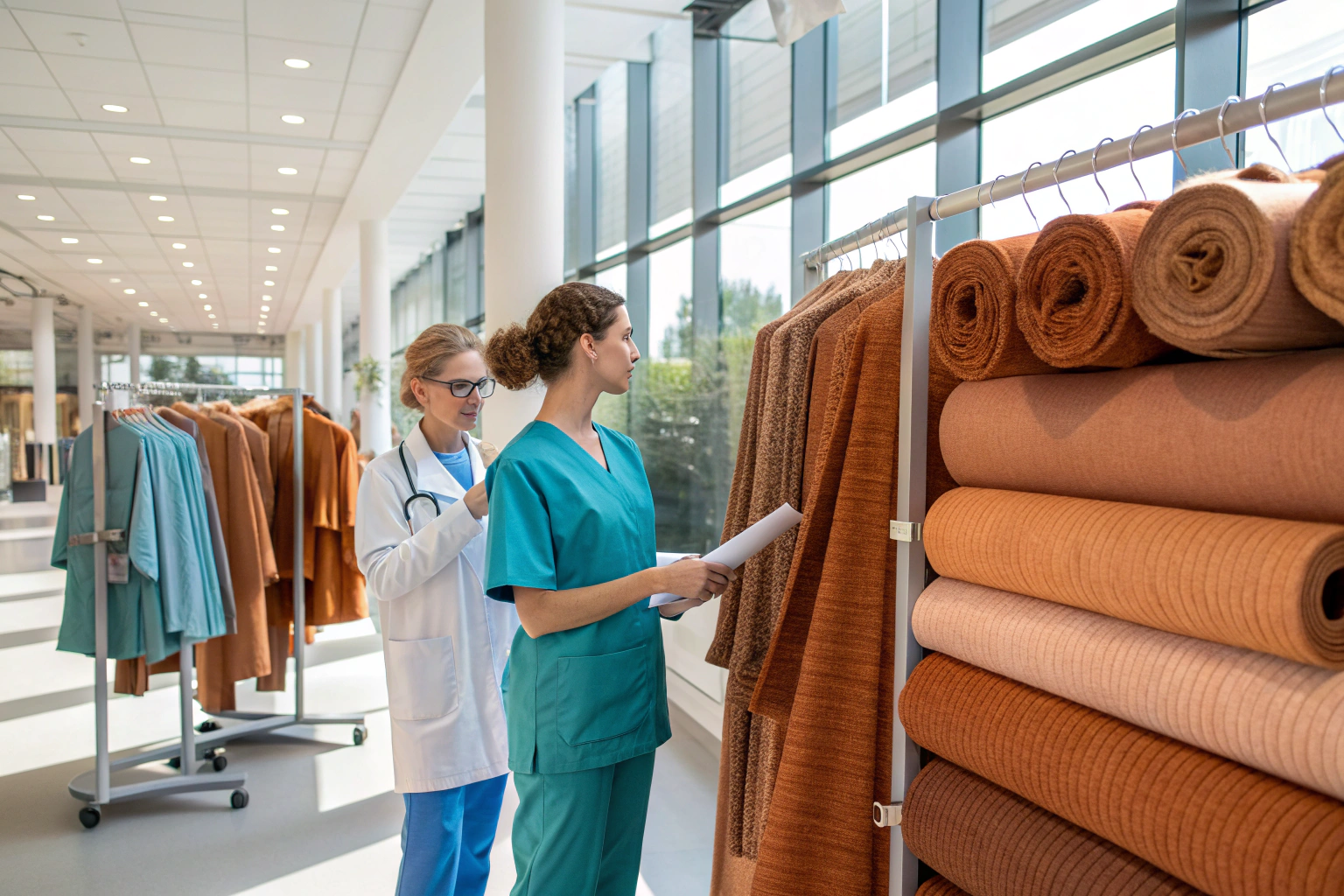In today’s healthcare industry, uniforms must do more than look professional—they must actively protect staff and patients. Antibacterial copper knits have emerged as a top choice for hospitals, clinics, and nursing facilities. They combine style with powerful antimicrobial properties that can reduce harmful bacteria on fabric surfaces. But sourcing these specialty textiles requires more than a quick online search—it demands industry insight, reliable suppliers, and careful attention to standards.
If you want to secure the best antibacterial copper knits for healthcare uniforms, you need to know exactly what to look for and where to find it. That’s where my 20+ years in the textile industry give me a clear roadmap for sourcing without compromise.
And here’s the truth—while there are many suppliers claiming to offer copper-infused fabrics, only a fraction meet the quality, durability, and compliance required for professional healthcare use. So, let me guide you step-by-step through the process I’ve mastered, from fiber composition to shipping logistics.
Why Choose Copper-Infused Knits for Medical Apparel?
Copper has been valued for centuries for its natural antimicrobial properties. When embedded into fabric fibers, copper ions can disrupt bacterial cell membranes, reducing microbial growth between laundry cycles. For healthcare environments, this means an extra layer of protection in uniforms that are worn for long shifts in high-contact settings.
The reason copper knits stand out is their combination of softness, stretch, and antibacterial performance. This makes them ideal for scrubs, lab coats, and even patient gowns. Unlike treated fabrics that lose effectiveness after a few washes, quality copper-infused knits can maintain their antimicrobial function for up to 50 laundry cycles.
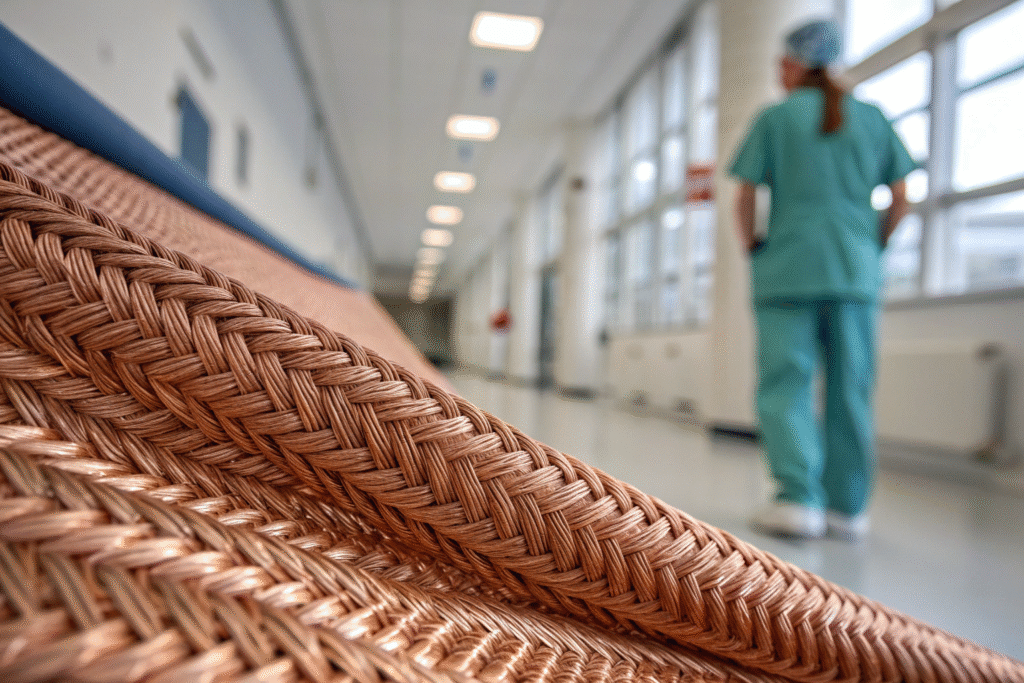
How Do Copper Knits Compare to Silver Antimicrobial Fabrics?
Silver-based fabrics are another popular choice in healthcare, but copper offers a broader antimicrobial spectrum and a warmer fabric tone that appeals to some design preferences. Copper Development Association studies show copper can neutralize certain bacteria faster than silver, especially in moist environments. Additionally, copper is often more cost-effective for large-scale uniform production compared to silver-infused textiles.
Are Copper Knits Comfortable for All-Day Wear?
Comfort matters as much as function in medical apparel. The interlooped knit structure allows breathability, flexibility, and moisture-wicking, making it suitable for long shifts. When blended with fibers like Tencel™ or recycled polyester, the result is a soft yet durable fabric that can withstand industrial laundering without pilling or fading.
Key Quality Standards for Antibacterial Healthcare Fabrics
Healthcare fabrics must meet strict safety and performance benchmarks before they can be used in clinical settings. This is where many low-cost suppliers fail—cutting corners on testing and certification to lower prices.
The most reliable antibacterial copper knits carry internationally recognized certifications such as:
- AATCC 100 for antimicrobial activity assessment
- ISO 20743 for antibacterial textile performance
- OEKO-TEX® Standard 100 for safety from harmful substances
- SGS or ITS lab reports confirming durability and fiber content
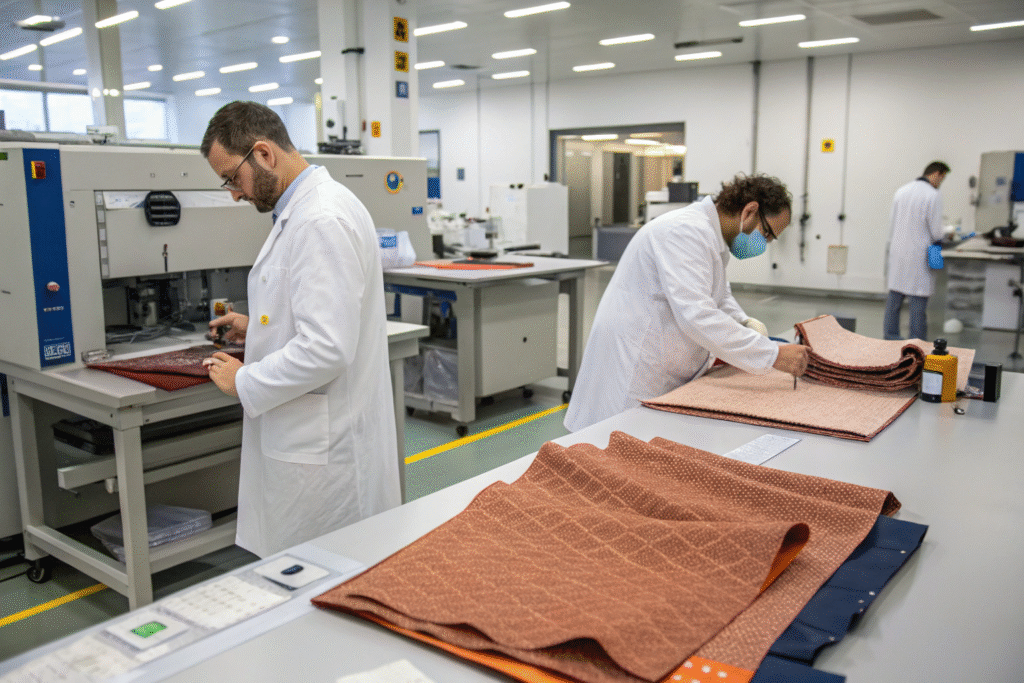
What Testing Is Essential Before Bulk Orders?
Before placing a large order, I always require independent lab testing from suppliers. This includes antimicrobial efficacy reports, colorfastness testing, and shrinkage data. The supplier should also provide QR code tracking for each fabric roll so you can trace production and testing history.
How to Avoid Counterfeit Certifications?
Unfortunately, fake certificates are common in the fabric trade. I recommend verifying all documents directly with the issuing body. The OEKO-TEX® verification tool is particularly useful for checking authenticity. This simple step can save your brand from legal risks and costly returns.
Where to Find Reliable Copper Knit Fabric Suppliers
Finding a dependable supplier means looking beyond basic price comparisons. In my experience, the best partnerships come from suppliers who understand the healthcare industry’s unique demands.
Top sourcing channels for antibacterial copper knits include:
- Textile trade shows like Canton Fair and Intertextile Shanghai
- Verified B2B platforms such as Alibaba Verified Suppliers
- Direct factory visits in textile hubs like Keqiao, Zhejiang, China
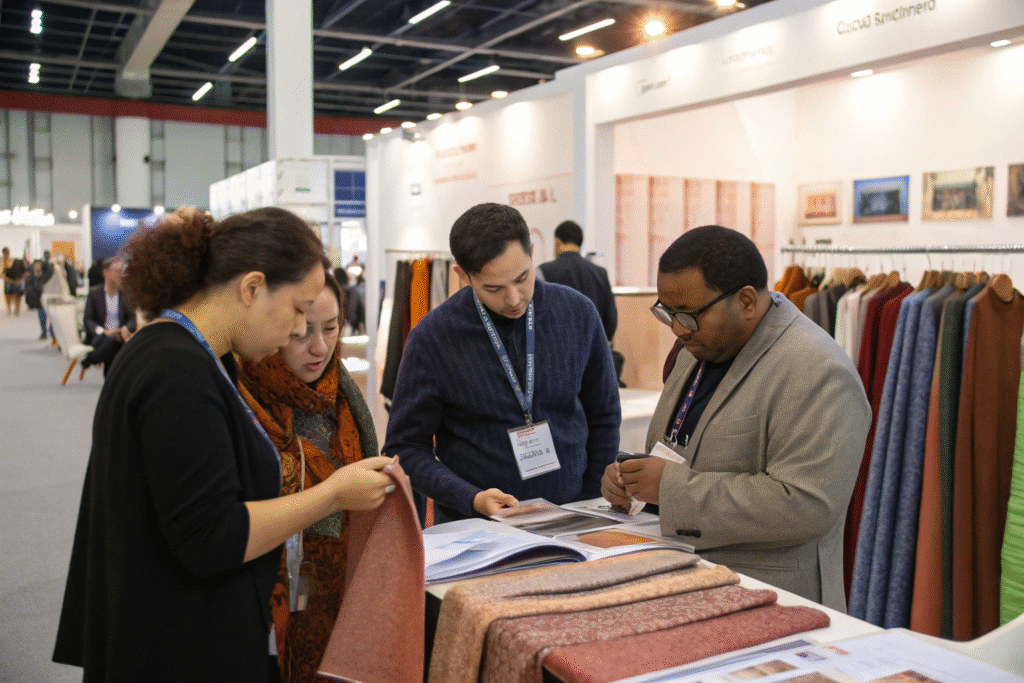
Should You Choose a Manufacturer or a Trading Company?
Working directly with a manufacturer often means better pricing and more control over quality. However, a good trading company with deep factory relationships can provide flexibility, especially if you want multiple fabric types in one shipment. My company Fumao Fabric operates as a hybrid—managing production in our own weaving and knitting mills while also coordinating specialty processes like coating or embroidery through trusted partners.
Is It Worth Hiring a Local Sourcing Agent?
A professional sourcing agent familiar with China’s textile clusters can streamline negotiations, factory audits, and quality checks. They can also handle communication if language or time zone differences are a challenge. For high-value technical fabrics like copper knits, this investment often pays for itself in fewer delays and higher compliance.
Cost and Logistics Considerations When Importing from China
Copper-infused knits cost more than standard polyester or cotton fabrics, but their extended lifespan and antimicrobial benefits can offset the higher unit price over time.
When calculating landed cost, consider:
- Fabric price per yard or meter
- Minimum order quantities (MOQs)
- International shipping (sea vs. air)
- Import duties and tariffs
- Customs clearance fees
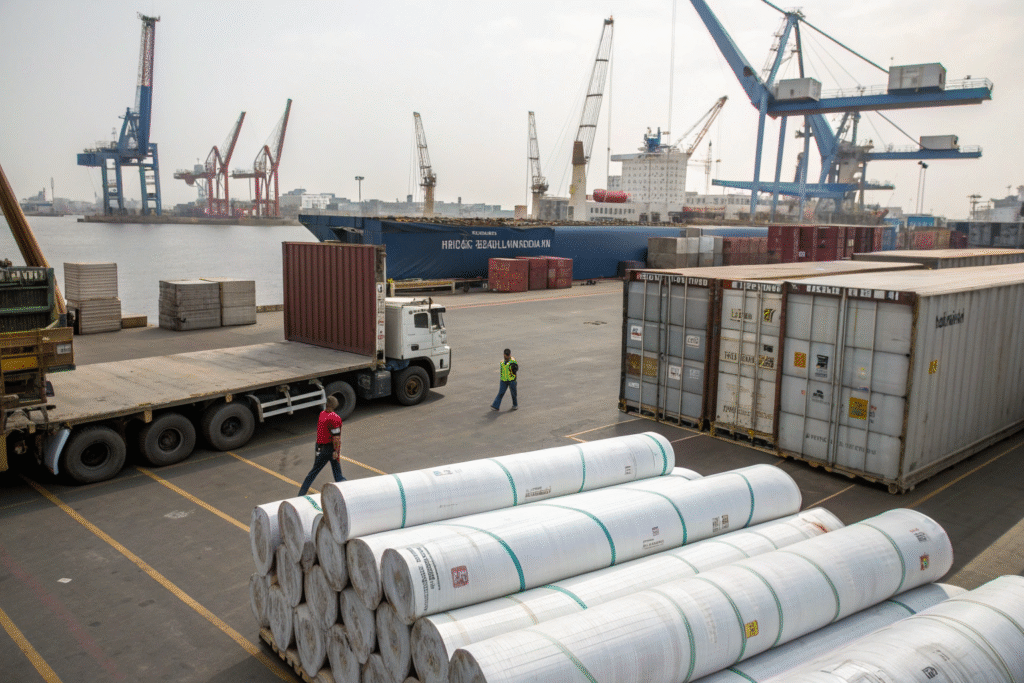
How to Reduce Shipping Costs Without Delays?
One strategy is to consolidate shipments with other apparel materials from the same supplier. Using multimodal transport through hubs like Ningbo or Shanghai can shorten delivery times while reducing costs. Another tip: book shipments well before holiday seasons to avoid congestion surcharges.
Can You Avoid US Tariffs on Certain Fabrics?
While many textiles from China face tariffs, fabrics with certain performance features—such as medical-grade certifications—may qualify for reduced duties under specific HS codes. An experienced freight forwarder can guide you through these classifications to save costs legally and efficiently.
Conclusion
Sourcing antibacterial copper knits for healthcare uniforms is a balance of quality, compliance, and cost efficiency. By understanding the science behind copper-infused fabrics, verifying supplier credentials, and planning logistics smartly, you can deliver uniforms that protect healthcare workers while lasting through countless washes.
If you are ready to produce your own copper knit healthcare apparel, I invite you to partner with Shanghai Fumao. Contact our Business Director, Elaine, at elaine@fumaoclothing.com to start developing your order with a trusted manufacturing team that understands both the textile science and the global supply chain.

